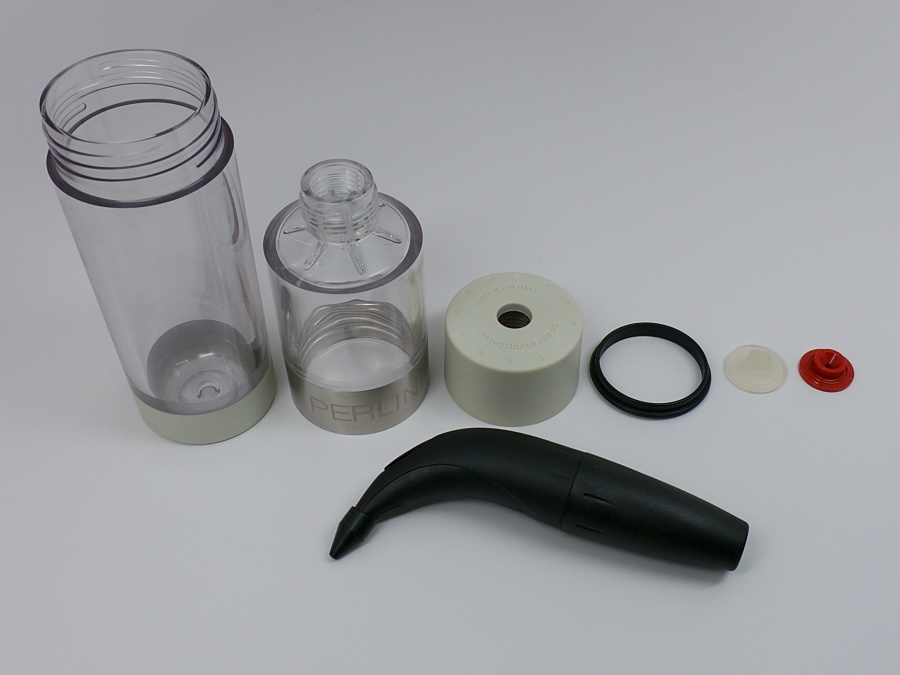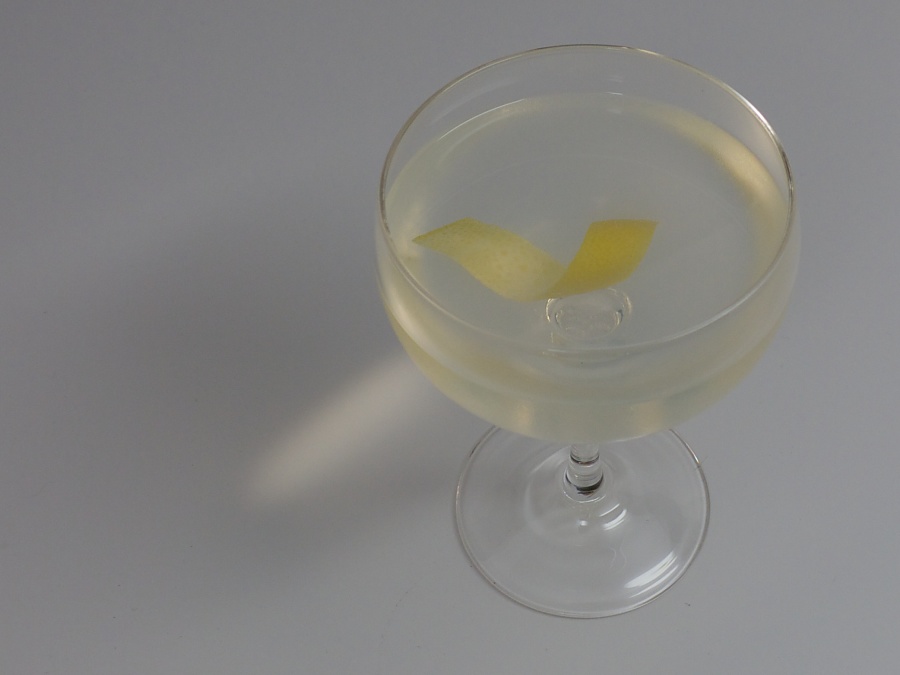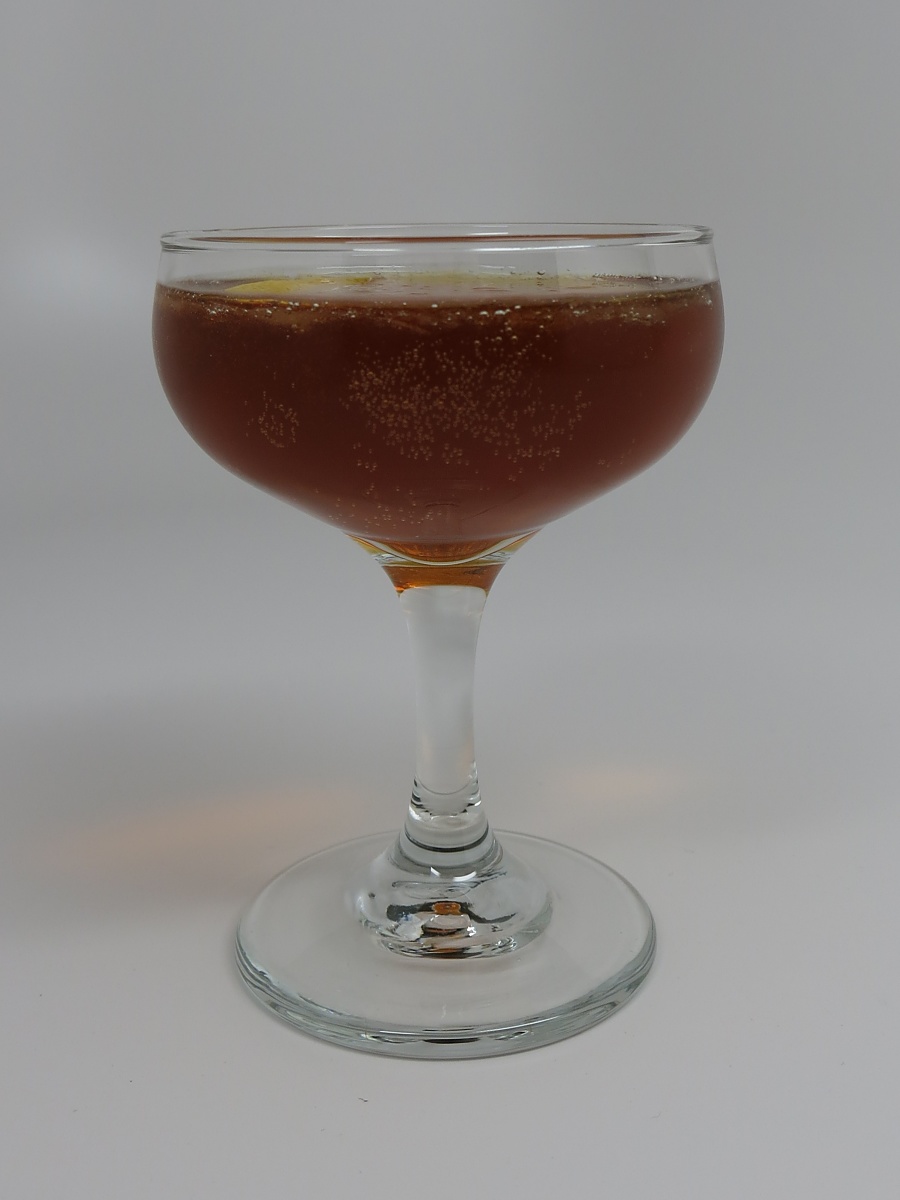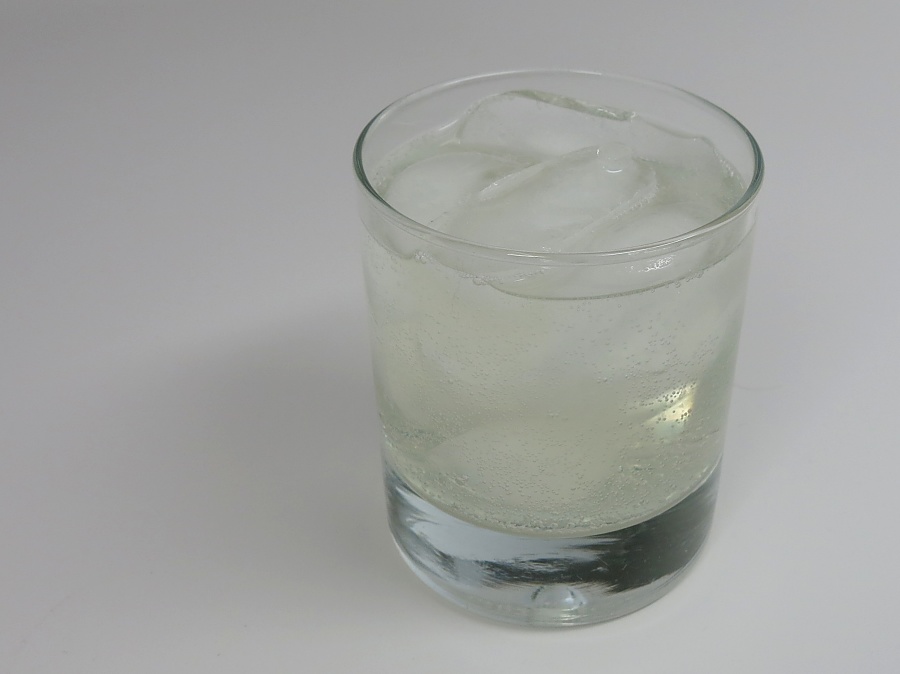The majority of my experience with cocktail carbonation is with the Perlini Cocktail Carbonation System. The Perlini system is manufactured by Perlage Systems. The initial product offered by Perlage was designed to provide indefinite storage (with carbonation) of an opened bottle of Champagne. This was done by replacing oxygen in a Champagne bottle with pressurized CO2, preserving bubbles and preventing oxidization.
The Perlini cocktail system is straightforward. It provides a plastic gas-tight cocktail shaker. After pressurization, the cocktail is prepared like normal, allowed to rest, and then strained via the integrated strainer. A fine-mesh strainer is useful for avoiding ice chunks like any other cocktail shaking method.
The consumer version provides a hand-held regulator to introduce the CO2. It is powered by 16 gram cartridges, quite a bit larger than the small-size cartridges seen in BB guns or cream whippers (never mind that those are NO2). Perlage sells these in food-safe form, but my experience with soda carbonation is that “food safe CO2” and “welding CO2” are not particularly different in practice. Your mileage (and risk profile) may vary. I believe this hand-held pressurizer to be the weakest link in the system; it is cheap, works poorly, and makes use of the system quite expensive.
The commercial version provides hardware to connect either to a CO2 tank or a soda gun splice. I have no experience with this version, but it makes a lot more sense on paper.
Practical Cocktail Carbonation
Carbonated alcohol comes in many forms and is produced via many methods. The idea of a carbonated alcoholic beverage is not new, but carbonating a cocktail falls somewhere in the “modernist mixology” spectrum.
The bubbles provided by carbonation are the first interesting aspect. They change the texture and experience of drinking a beverage. In my experience this carbonation results in the texture of somewhat flat Champagne; it does not approach the vibrant and violent bubbles of seltzer. Next, the carbonation changes the balance of the drink. The change is difficult to describe. The best analogy I can come up with is that it is not unlike making a flat soda fresh again. The taste is sharper and seems to be more acidic and lively. The intuition that follows from this ends up being a somewhat solid foundation: A still cocktail with good balance will be imbalanced via carbonation, and a carbonated cocktail with good balance will be imbalanced when made still.
In general I find cocktails that do well under carbonation are lower in alcohol and rather sweet. Additionally, the carbonation and coldness deadens the flavors, even more so than just shaking. A Boulevardier made with premium ingredients is a magnificent drink. With carbonation, it tastes like a nice alcoholic cola. The changed version, while not bad, is not in the same league.
My first foray into cocktail carbonation was via the iSi Twist ‘n Sparkle. This product was recalled due to a tendency to explode. The idea of the plastic bottle going off like a hand grenade and shooting sharp chunks into my arms was not appealing. iSi has not re-entered this market.
I have had good luck with carbonation of water via a Sodastream unit, but I was not about to put anything other than water into that system.
I thought, then, that the Perlini system would seal the deal with its purpose-built cocktail carbonation system.
Not So Fast!
The Perlini shaker is robust. It is made from thick plastic. I am not sure what the particular plastic is, but it feels like a heavy polycarbonate or acrylic of some sort. I feel confident the seals will allow gas bypass long before the pressure vessel itself will experience fatigue and failure. The parts are simple and easy to separate and clean.

The problem is some combination of the awful hand-held pressurization unit and the low pressure permitted in the chamber before gas starts to leak. Once moderate pressure builds up in the shaker, the hand-held regulator prohibits further gas from flowing in. If by some miracle it allows CO2 in any quantity in the chamber, it quickly starts venting gas (or fluid) at the mid-chamber seal. This all makes sense from a safety standpoint, but the carbonation level achieved as a result is not that impressive.
My experiments have not been scientific, but two general principles seem to hold:
- Drinks with citrus or pulp do not carbonate well.
- The more alcohol in a drink, the less effective the carbonation.

An attempt to carbonate a martini is more or less pointless. The process adds a mild acidic bite and little else. Not an improvement.

Carbonating a negroni goes a little better, but the complexity of the ingredients is compromised. The level of carbonation is not that stimulating, but the damage to the drink is substantial. The trade is not worth it. An Americano with a healthy dose of Carpano does better still, but just making the drink with some Prosecco or seltzer is better.

In a last ditch effort, adding (additional) bubbles to a gin and tonic fails as well. I hoped this would take the highball to the next level but was disappointed. The bite of the CO2 is there again, but the end result is not an improvement. A good bespoke tonic syrup added to seltzer water and some gin is in all ways superior.
There may be a more effective cocktail carbonation system out there, but I have a difficult time recommending the Perlini system or cocktail carbonation in general. The concept is at best a novel gimmick and not worth the cost of entry.

